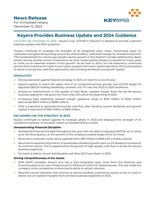
 This month Xcelerate Auto is launching a first-of-its kind product for the EV space. It’s an extended EV battery warranty that not only covers the EV’s battery and drive unit, but aims to improve the EV ownership experience in every way.
This month Xcelerate Auto is launching a first-of-its kind product for the EV space. It’s an extended EV battery warranty that not only covers the EV’s battery and drive unit, but aims to improve the EV ownership experience in every way.
“We take that goal seriously,” explains KJ Gimbel, Xcelerate’s CEO and founder. “A lot of us are ex-Tesla employees from the early days, so we feel like we’ve been around since the beginning.”
That’s true — one of KJ’s team members is a good friend of mine, Brent Seavy, who was the very first Tesla employee tasked with selling used EVs back in 2015. “It was quite an adventure,” Brent explained over a Zoom call. “We were literally in a garage in Highland Park [a suburb of Chicago]. I remember I had a black Tesla Model S Founders Series VIN 000007 and a bright yellow Tesla Roadster parked next to my desk. I was handed a list of a couple hundred names of people who were interested in buying a used Tesla, and just started dialing!”

Image courtesy Xcelerate
It turns out, people were willing to consider a used EV, and they were curious about what kind of extended warranty options they’d be able to get — but options were few and far between, with many warranty providers simply unable to answer questions about what a Tesla drive unit warranty could look like, or how a Tesla battery limited warranty could even work.
At that time, it was difficult to find warranty companies who would offer appropriate coverage for EVs — if they covered them at all! “In those early days, we didn’t know what we didn’t know,” says KJ. “So the cost of an EV warranty was very high and didn’t include things like the battery, which is — by law — covered for eight years from the manufacturer. But, as more data has come in, and we’ve seen electric vehicles that are over a decade old, with hundreds of thousands of miles on them, and that data has helped us improve the product.”
Think of that original XCare product as “phase one” back then. “It took about 12-18 months to get the process down with our insurance partners,” explains KJ. “They weren’t aware of Tesla or any other EVs, and we were their source of truth and information. We had to figure out how to remove all the biases from the traditional auto and service world to make them understand the D2C service model at Tesla. Then work around the other OEMs’ service models and claims processes, too. For year two, we were able to drop our costs by 40-60% and we passed those savings on to our customers. We called that XCare’s second phase,” he continues. “Now, we’re entering the third iteration. XCare, phase three.”
Why It Matters
With the second version of XCare, everything shot up. Xcelerate was looking at huge volumes of Tesla and other legacy brand EVs entering the used market just as they were coming out of their factory warranty, and the most common questions people had about their new-to-them EV (and, often, their first EV) were about the battery.
How long would it last? How long would it hold its range? What would it cost to replace it if something went wrong? What is Tesla drive unit coverage? Can I extend my EV battery warranty?
“Obviously the most critical (and expensive) component of an EV is the battery and there was misinformation everywhere about what a replacement could cost,” said KJ. “So, about 18-24 months ago, our focus at XCare went from teething and growing pains to developing a real battery offering that would enable EV buyers to confidently purchase an older electric vehicle without that uncertainty of a ‘surprise’ battery replacement hanging over them.”
That’s more important than ever these days. The average transaction price of a new car has risen dramatically in recent years, hovering at about $48,000 in the US. But EVs? Despite the availability of cars like the Nissan LEAF and Chevy Bolt that could be had for about half that overall average, the transaction price of a new EV is about $64,000 — nearly 50% more than the price of an internal combustion-engined vehicle.
That’s an investment that people will want to protect and XCare’s latest iteration aims to help EV buyers do just that, with two distinct products.
The first is XCare Premium, which covers everything, including the battery and drivetrain for applicable electric vehicles. The other covers just the battery and drivetrain, sort of like a conventional powertrain warranty, for Tesla vehicles only. “Exactly,” says Milad Davoodi, Xcelerate’s COO. “The first XCare [product] is XCare Premium, which is all-in-one coverage, and the second product is XCare Battery & Drive Unit, which only offers Tesla battery and drive unit coverage. We don’t want to confuse anybody, so we’re going to clearly tell everybody there’s no crossover here.”
That distinction helps Xcelerate maintain transparency with its customers, but also enables Tesla owners who are primarily interested in an EV battery extended warranty and drive unit coverage to “opt out” of covering things like their power windows, seat motors, or HVAC systems — which might not concern them (or concern them as much), along with giving them an option to purchase coverage at a lower price.
How long are the battery and drive unit extended warranties available in the XCare Premium and standalone XCare Battery & Drive Unit coverage good for? The warranty can be applied to vehicles that still have 12 months of remaining factory battery coverage and takes that coverage up from the standard eight years to a whopping 16 (!!!) years!
It also means that existing Tesla owners with XCare coverage can easily add battery and drive unit coverage to their existing warranties.
And while we’re talking about the new battery and drive unit warranty, it’s worth noting that the warranty doesn’t just cover battery failure — it covers battery degradation, as well. “We use the 70% metric,” offers Milad. “The same as Tesla…and we not only use their metrics, we use their determinations, as well.”
I asked what he meant. “We don’t call inspectors in,” he explained. “We don’t order parts from different people, we don’t negotiate on the labor charges. Tesla [or another service facility] is making all the determinations and they’re being validated by our team of Tesla experts. We just pay the bill.”
Unlike some third party warranties offered by dealers, the XCare battery and drive unit product offers a $30K aggregate limit of liability that the company plans to make as transparent as possible on the website. “We’ve seen about $12-18K as an average replacement cost for a Tesla battery,” says KJ. “We’re confident that we’ll be able to support the vast majority of claims that arise, regardless of the model.”
“We’re not trying to instill fear,” says Milad, putting a bow on the conversation. “We want people to know that these batteries last, drive units aren’t prone to failure, and we’re confident in that, for the majority of people. What we’re trying to do is make it easier for more people to get into EVs by reducing the perceived risk factors that could prevent someone investing in an older EV.”
Whether you are looking for an EV battery extended warranty for your Rivian, Lucid Air, Ford Mustang Mach-E (or any other EV), or are specifically looking for a Tesla drive unit warranty and battery coverage, XCare Premium and the standalone XCare Battery & Drive Unit for Tesla owners can be purchased through the company’s website.
Product Highlights
- XCare (up to 10-year-old ld EV)
- XCare Battery & Drive Unit (in eligibility
- Pricing varies on vehicle, age, and mileage
- $30K limit of liability for XCare battery and drive unit (does not apply to XCare Premium; for XCare premium, the cost of repair cannot exceed the current value of the vehicle)
- XCare battery and drive unit has a $500 deductible, which reduces the upfront cost of the warranty coverage for buyers “just looking for catastrophic coverage,” especially for battery
- Existing customers won’t miss out; standalone Battery & Drive Unit warranty is available for people who already have XCare
This post is sponsored by Xcelerate.
I don’t like paywalls. You don’t like paywalls. Who likes paywalls? Here at CleanTechnica, we implemented a limited paywall for a while, but it always felt wrong — and it was always tough to decide what we should put behind there. In theory, your most exclusive and best content goes behind a paywall. But then fewer people read it! We just don’t like paywalls, and so we’ve decided to ditch ours. Unfortunately, the media business is still a tough, cut-throat business with tiny margins. It’s a never-ending Olympic challenge to stay above water or even perhaps — gasp — grow. So …




